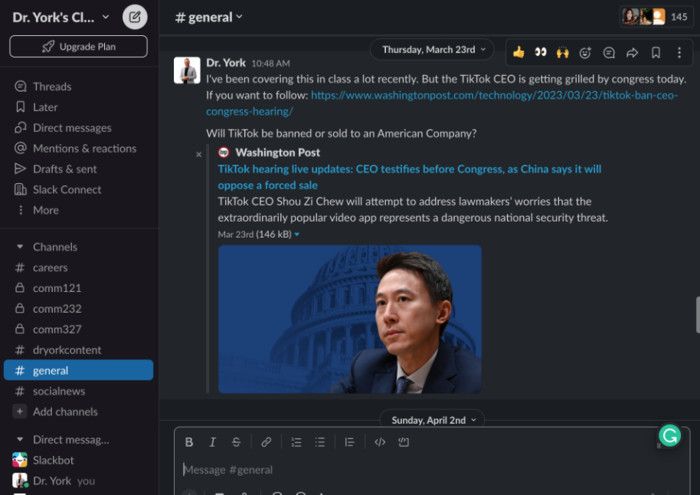Use Active Learning to Engage Higher Ed Students Online
In the keynote talks that I give, I sometimes say that there is literally nothing in any of my lectures that is not available for free somewhere on the internet. This might not be the most crowd-pleasing statement, but it is simply today’s reality. Dated video lectures and assigned readings are not enough to engage students anymore, if they ever were.
Active learning components are therefore important to include in online courses, and I make sure to do this with all of the classes that I teach. For example, let’s say I am teaching a lesson on search engine optimization. Rather than just have students read about SEO, I want them to actually practice SEO techniques using dummy versions of online content such as landing pages, blog posts, videos and podcasts. Instead of just explaining what makes a good Google ad, I want them to use a simulation that moves them through the entire process of creating ads, bidding for keywords and projecting their campaigns’ return on investment.
A couple of helpful tools for active learning are the metaverse and generative AI. Students are aware of the growing role of artificial intelligence in many industries and will increasingly look for learning experiences that integrate AI in some way. Having AI tools integrated will significantly boost the appeal of your program. And speaking of AI, an added benefit of prioritizing this kind of active learning is that it sidesteps the debate around students using AI to cheat on written assignments.
DIG DEEPER: How can generative AI be used in higher education?
Keep Subject Matter Current to Keep Students Engaged
There are some subjects, such as math, art history and philosophy, where the basics and fundamentals mostly remain the same year after year. Other fields, meanwhile, such as business, marketing, communications and healthcare — all of which are popular with students — are changing constantly. Therefore, what needs to be taught is constantly changing as well. It isn’t enough to create online course content and just use it year after year; you have to continually update it and create new content to reflect what is going on in the workplace.
Fortunately, there are ways to do this that don’t require you to change the core content of your course every year. You can still have a set of main lectures to which you simply add updated supplements, while taking other measures to stay on top of the latest news. For example, I send out weekly lists of curated links to the latest news and updates that are relevant to the courses that I teach. I am always reading and watching so that I can stay up to speed with what is happening in my field.
As an alternative or addition to such weekly lists, you could also create quick YouTube videos each week in which you summarize the latest developments your students should know. These do not need to have high production values because they are not meant to replace your core lectures, just supplement them with new and current information.
READ MORE: Learn how to create a sense of community in hybrid learning.
Build Community and Personal Relationships with Students
Communities and relationships form quite easily and naturally in physical classrooms, and we all know that replicating that is a major challenge for online learning. During the pandemic, it became apparent that building a sense of community online requires deliberate and sustained effort.
Among the tools that I use to facilitate community for each of my classes are Slack workspaces. Each workspace will have different channels, including discussion questions, polls, and information on careers and internships. The workspaces are not mandatory, there are no points involved and about a third of my students don’t use them at all. But for those who want that sense of community, the spaces are there for them.












